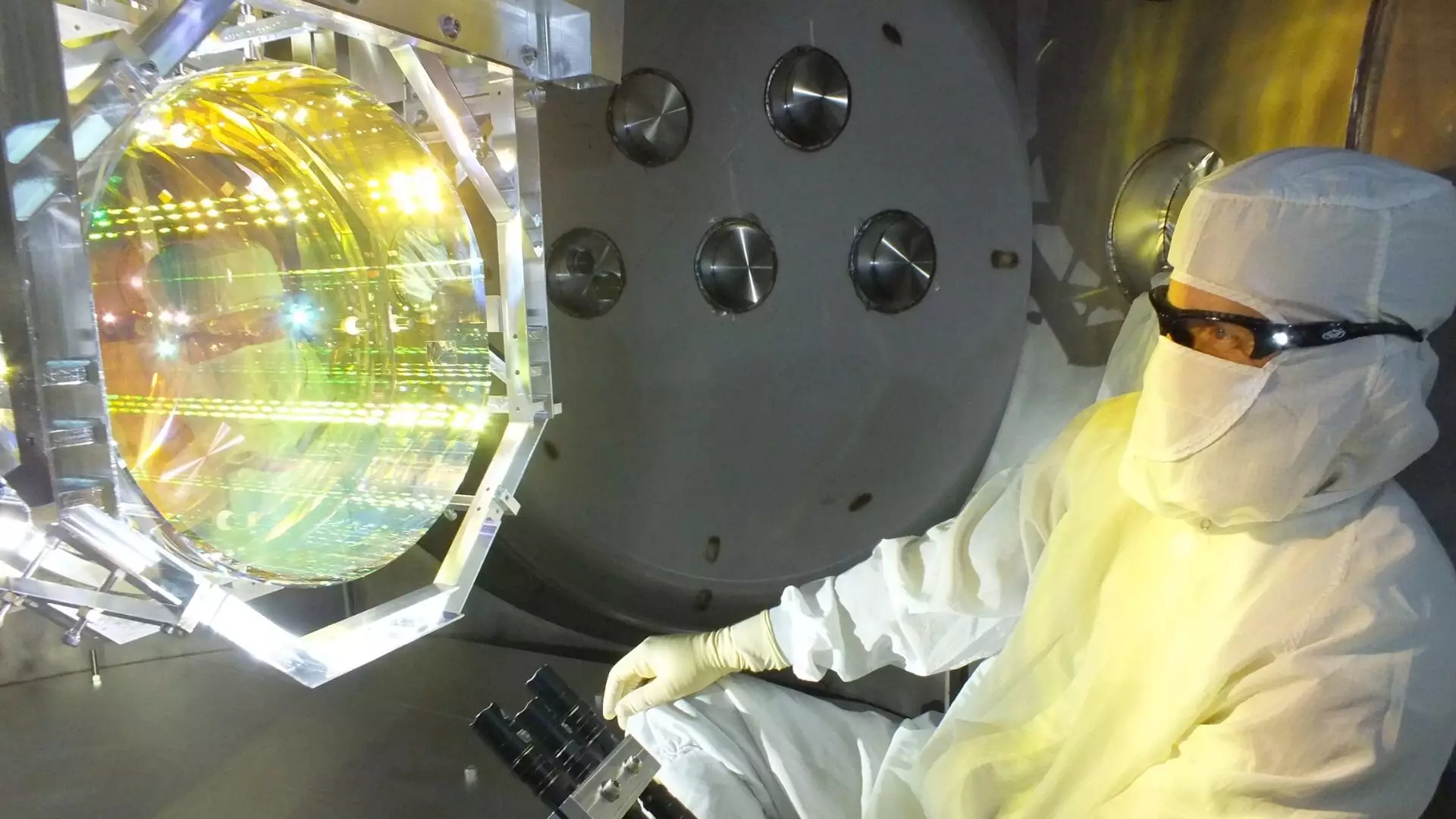Dark matter, an enigmatic component of the cosmos, comprises approximately 30% of the universe’s detectable matter. Its elusive nature has sparked an endless quest among scientists to uncover its secrets. Unlike ordinary matter, dark matter does not emit, absorb, or reflect light, making it invisible to traditional observational techniques. Instead, its existence is inferred from gravitational effects, notably the movement patterns of galaxies and galaxy clusters. Despite the relentless pursuit of knowledge surrounding dark matter, its composition and characteristics remain largely a mystery, prompting innovative approaches to its investigation.
A recent study published in Physical Review Letters (PRL) presents a promising technique for pursuing a specific type of dark matter—scalar field dark matter—using gravitational wave detectors such as the Laser Interferometer Gravitational-Wave Observatory (LIGO). This work, spearheaded by Dr. Alexandre Sébastien Göttel from Cardiff University, seeks to bridge the gap between particle physics and astrophysical observations. As Dr. Göttel noted, his transition from studying solar neutrinos to gravitational wave data analysis was fueled by the aspiration to channel his expertise into the groundbreaking field of dark matter research.
Gravitational wave detectors are highly sophisticated instruments capable of detecting infinitesimal deformations in spacetime caused by gravitational waves. LIGO employs laser interferometry, wherein a laser beam is bifurcated and directed along two perpendicular arms, each 4 kilometers in length. As gravitational waves pass through, they induce variations in the spacing of these arms, leading to changes in the interference pattern when the beams recombine. These variations serve as signatures of gravitational wave events.
The study introduces scalar field dark matter, theorized to consist of ultralight scalar bosons, particles lacking intrinsic spin. One defining feature of these particles is their ability to behave wave-like, resulting in the formation of stable structures—termed clouds of dark matter—that can traverse the universe without disintegrating. Dr. Göttel highlights that some theoretical frameworks suggest dark matter behaves more akin to a wave than as discrete particles. This foundational concept underscores the potential to detect scalar field dark matter’s oscillatory effects on physical matter using LIGO’s capabilities.
Utilizing data from LIGO’s third observational run, the research team expanded the search to lower frequency ranges (from 10 to 180 Hertz) to enhance sensitivity in observing dark matter signatures. This study innovatively accounted for not only the impact of dark matter on the beam splitters but also its effects on mirrors within LIGO’s interferometer structure. This comprehensive approach was vital for maximizing the detection of any potential signals arising from scalar field dark matter interactions.
To comprehend how scalar field dark matter could influence LIGO’s functionality, the researchers developed a theoretical framework to simulate these interactions. Through sophisticated computational tools, they analyzed the expected anomaly in LIGO’s data, establishing a reference point for the kind of signals they would need to identify. While their findings did not yield direct evidence for the presence of scalar field dark matter, the scientists succeeded in refining existing upper limits concerning its interaction strength with LIGO’s components—improving previous estimates by a factor of 10,000.
By incorporating effects on test masses, or mirrors, and applying novel statistical analysis techniques, the research team was able to provide significant advancements in understanding the interplay between scalar field dark matter and gravitational wave detectors.
Though the current investigation did not detect scalar field dark matter, the methodologies developed pave the way for future explorations. The team envisions that enhancements in detector technology will eventually surpass existing indirect search methods, allowing for the exclusion of entire categories of scalar dark matter theories. Furthermore, their preliminary findings regarding the implications of changes in core optics—like mirror thickness—could lead to innovative adjustments that maximize detection potential.
Ultimately, this study represents an exciting leap forward in the quest to decode dark matter. The exploration of such cutting-edge techniques, merging astrophysics and particle physics, heralds a new era in our understanding of the universe and its hidden components. Through collaborations and advancements, scientists remain steadfast in their pursuit to unravel the mysteries surrounding dark matter, potentially revolutionizing our comprehension of fundamental physics as we know it.


Leave a Reply